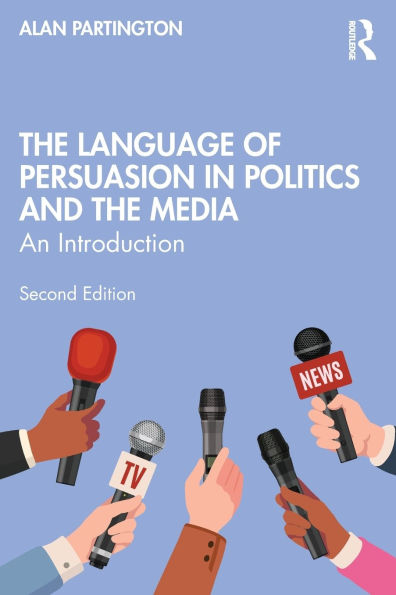- Evaluation, the ‘engine’ of persuasion
- ‘Spin’, ‘spin control’ and ‘image’ politics
- Models of persuasion, including authority, contrast, problem-solution, association, 'garden path'
- Pseudo-logical and ‘post-truth’ arguments
- Humour, irony and satire
- Metaphors: use, misuse and dangers
- Election rhetoric
Extracts from speeches, soundbites, newspapers and blogs, social media, interviews, press conferences, election slogans and satires are used to provide the reader with the tools to discover the beliefs, character and hidden strategies of the would-be persuader, as well as the counter-strategies of their targets. This book demonstrates how the study of language use can help us appreciate, exploit and protect ourselves from the art of persuasion.
With a wide variety of practical examples, on both recent issues and historically significant ones, every topic is complemented with guiding tasks, queries and exercises, with keys and commentaries at the end of each unit. This highly original textbook is ideal for all introductory courses on language and politics, media language, rhetoric and persuasion, discourse studies and related areas.
- Evaluation, the ‘engine’ of persuasion
- ‘Spin’, ‘spin control’ and ‘image’ politics
- Models of persuasion, including authority, contrast, problem-solution, association, 'garden path'
- Pseudo-logical and ‘post-truth’ arguments
- Humour, irony and satire
- Metaphors: use, misuse and dangers
- Election rhetoric
Extracts from speeches, soundbites, newspapers and blogs, social media, interviews, press conferences, election slogans and satires are used to provide the reader with the tools to discover the beliefs, character and hidden strategies of the would-be persuader, as well as the counter-strategies of their targets. This book demonstrates how the study of language use can help us appreciate, exploit and protect ourselves from the art of persuasion.
With a wide variety of practical examples, on both recent issues and historically significant ones, every topic is complemented with guiding tasks, queries and exercises, with keys and commentaries at the end of each unit. This highly original textbook is ideal for all introductory courses on language and politics, media language, rhetoric and persuasion, discourse studies and related areas.

The Language of Persuasion in Politics and the Media: An Introduction
386
The Language of Persuasion in Politics and the Media: An Introduction
386Paperback(2nd ed.)

Product Details
| ISBN-13: | 9781032648248 |
|---|---|
| Publisher: | Taylor & Francis |
| Publication date: | 07/09/2025 |
| Edition description: | 2nd ed. |
| Pages: | 386 |
| Product dimensions: | 6.12(w) x 9.19(h) x (d) |
